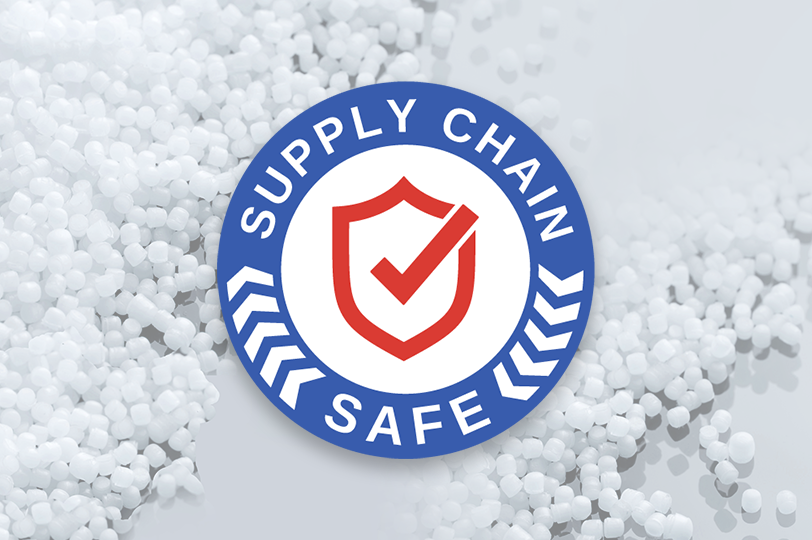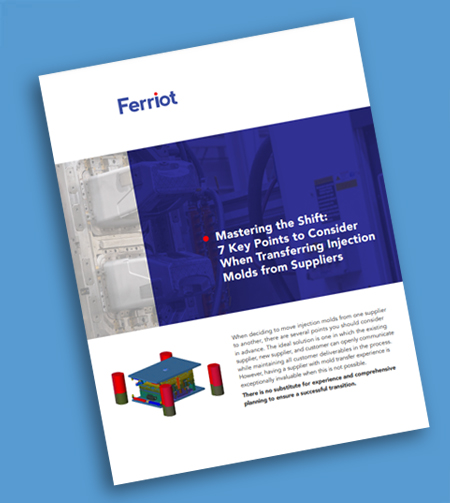Like a baseball team with runners on first and third, manufacturers are in scoring position when they shift production from overseas to domestic manufacturing, in a practice called “reshoring.” Just as baseball victories transpire due to team effort, companies that partner with experienced domestic suppliers can better plot and execute an effective reshoring strategy.
Catalysts for reshoring
Recent global events have exposed critical vulnerabilities in manufacturing supply chains, particularly in the injection molding industry. In response, many manufacturers are strategically shifting production back to North America. Original Equipment Manufacturers (OEMs) are grappling with extended lead times, quality control challenges and the prospect of rising tariffs—all factors that cause a reevaluation of current offshore manufacturing practices. Reshoring – the practice of bringing manufacturing operations back to domestic facilities – has emerged as a compelling solution that extends beyond cost considerations.
Expected changes in trade policies and potential increases in import tariffs are driving U.S. companies to reevaluate their global supply chain strategies.1 Historically, manufacturing location decisions were primarily driven by labor costs. However, today’s reality demands a more nuanced analysis employing strategies that aim to reduce dependence on regions where tariff risks are highest while maintaining supply chain efficiency.
Beyond cost savings: The true value proposition
Contrary to conventional wisdom, reshoring isn’t primarily about cost reduction. Instead, it delivers strategic advantages that can significantly impact an OEM’s competitive position:
Geographic proximity transforms supplier relationships from transactional to strategic partnerships. Consider a manufacturer in Ohio working with local suppliers – the ability to have face-to-face meetings, conduct rapid prototyping sessions, and address quality issues in real-time creates unprecedented agility.
Lead times shrink dramatically when shipping distances are measured in miles rather than ocean crossings. This compression enables just-in-time manufacturing strategies, reduced inventory costs, and faster market response. For injection molded components, where design iterations are common, this agility can accelerate time-to-market by weeks or months.
Quality control benefits materialize through immediate feedback loops. When defects are identified, engineers can be on-site within hours, not weeks. This proximity enables root cause analysis and corrective actions to be implemented rapidly, minimizing scrap rates and customer impacts.
Intellectual property protection becomes substantially more robust under U.S. legal frameworks. For complex injection molded components, particularly those incorporating proprietary designs or materials, this protection can be crucial for maintaining competitive advantages.
And while reshoring might not lead to immediate, short-term cost savings, it generates economic ripples that extend far beyond the individual manufacturer. According to Economic Policy Institute research, manufacturing jobs create substantial multiplier effects–for every 100 manufacturing jobs created, more than 744 indirect jobs are generated across the supply chain and broader economy.
When companies reshore operations, they typically invest significantly in facility upgrades, new equipment, and workforce development. This investment catalyzes local economic growth through expanded tax bases, increased economic activity, and the growth of supporting businesses in logistics, maintenance, and professional services.
Additionally, domestic manufacturing facilities often offer higher-wage positions compared to service sector jobs, contributing to stronger local purchasing power and economic stability.
Strategic advantages for electronics manufacturers
Electronics manufacturers face unique challenges that reshoring can address. Component redesign opportunities emerge when working closely with domestic molders who understand both the technical requirements and market dynamics. Risk mitigation strategies become more effective with shorter supply chains and better communication channels.
Regional supply chain integration creates opportunities for vertical integration and just-in-time manufacturing. When mold makers, material suppliers, and molders are within close proximity, the entire supply chain becomes more responsive and resilient.
Mold transfer excellence
Successful reshoring hinges on executing a comprehensive mold transfer process, one that requires both technical expertise and strategic planning capabilities. The complexity of these transfers cannot be understated – they involve coordinating multiple stakeholders, managing critical timelines, and ensuring uninterrupted production throughout the transition. When executed properly, a well-planned mold transfer can significantly reduce supply chain risks while improving quality control and production efficiency.
The key to successful mold transfer lies in experience and comprehensive planning. This process begins with establishing sufficient buffer inventory to maintain supply chain continuity and extends through detailed technical evaluation of existing tooling, complete documentation of process parameters, and thorough production validation. A skilled domestic partner brings not only the technical capabilities for the physical transfer but also the strategic insight to anticipate and prevent potential challenges before they arise.
Ferriot follows established protocols for mold transfer and has walked through this process with numerous customers, offering detailed insights for companies considering the same. In summary, companies can experience more successful mold transfers when following protocols that include:
- Detailed engineering evaluation of existing tooling
- Complete documentation of process parameters
- Material specification review and optimization
- Production validation through first article inspection
- Implementation of quality assurance protocols
- Development of preventive maintenance schedules
Making the transition: Infrastructure and implementation
The transition to domestic manufacturing requires careful consideration of infrastructure readiness. Companies must prepare for this shift by evaluating their manufacturing ecosystem, including transportation networks, warehousing capabilities, and workforce development needs. Early movers in reshoring have already begun establishing new manufacturing and logistics networks, providing valuable insights for others following this path.
A systematic evaluation approach should include:
- Total cost analysis including tariffs, shipping, inventory carrying costs, and quality-related expenses
- Assessment of potential domestic partners based on technical capabilities and financial stability
- Development of detailed transition plans with clear milestones
- Establishment of communication protocols and project management structures
- Creation of contingency plans for potential challenges
Success in this transition relies heavily on selecting the right domestic manufacturing partner – one with proven experience in complex transitions, established quality systems, and the technical capabilities to support long-term growth. The ideal partner brings not only manufacturing expertise but also a deep understanding of supply chain optimization and strategic planning capabilities.
The future outlook
The injection molding industry stands at a pivotal moment as global trade dynamics evolve. While reshoring may not offer immediate cost savings, the strategic benefits of improved lead times, simplified logistics and shipping, better quality control and enhanced innovation capabilities create compelling long-term value. Companies that move early in establishing domestic or nearshore manufacturing capabilities may gain significant advantages in infrastructure development and workforce training. These early movers are helping to establish new manufacturing, logistics and trade networks that will benefit the entire industry.
Is your supply chain optimized for today’s manufacturing realities? The time to evaluate reshoring options is now, while domestic capacity remains available, and government incentives support the transition. Contact us to discuss how we can help you assess and execute your reshoring strategy.
1 https://www.moodys.com/web/en/us/insights/compliance-tprm/facing-tariff-pressures.html



